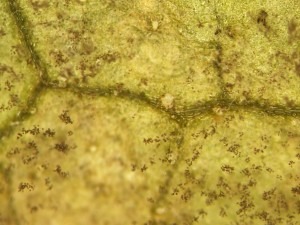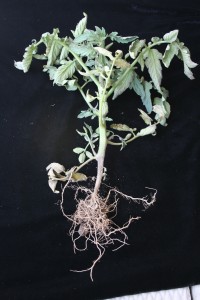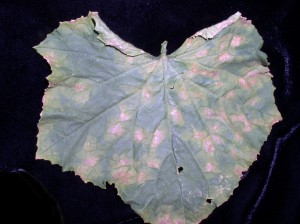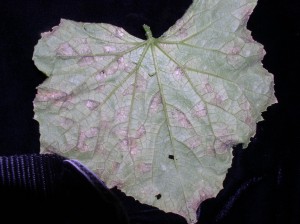Phytophthora infestans (Late blight)
Aerial detection of plant pathogens
Early detection of Phytophthora infestans, the causal agent of late blight, is crucial in limiting the pathogen’s spread. Conventional spore traps require that pathogens be differentiated based only on spore morphology (a time-consuming process). Using a solar-powered Roto-Rod air sampler, 62 liters of air can be sampled per minute, DNA can be extracted from sampled spores, and subsequently amplified with species-specific PCR primers. The technique is efficient and simple, and has allowed us to detect late blight in research fields approximately a week before symptoms are detected visually. Faster detection of wind-dispersed pathogens like late blight will help farmers take preventive action earlier.
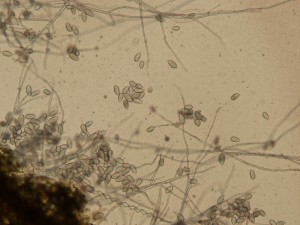
Phytophthora capsici
Variety trials for resistance to Phytophthora blight
Planting tolerant pepper varieties is a key component of successfully managing Phytophthora blight (caused by the oomycete Phytophthora capsici). There are already a number of sweet pepper varieties being marketed as tolerant to Phytophthora blight, and efforts are ongoing in both the public and private sectors to develop additional resistant varieties, as well as to breed for resistance in other vegetable hosts. In order to test how these varieties perform in upstate New York, we have been screening sweet and hot peppers, as well as some cucurbits, for tolerance to Phytophthora blight since 2007. For more information about P. capsici, check out the . Additionally, we are looking at naturally-occurring resistance to P. capsici in Cucurbita pepo (zucchini, pumpkin, summer squash). While no sources of complete resistance are known, we are working on identifying genetic loci determining variable levels of susceptibility.
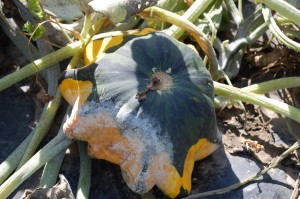
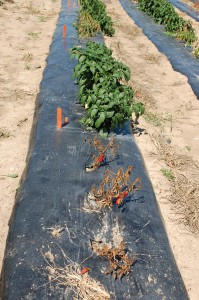
Population structure of Phytophthora capsici
We are characterizing new infestations of Phytophthora capsici in vegetable growers’ fields throughout New York State using modern genomic techniques. Isolates are tested for sensitivity to the fungicide mefenoxam (Ridomil), assessed for mating type, and genotyped using next generation sequencing techniques. Previous work in the Smart lab, using microsatellite markers, indicates that New York populations of P. capsici are highly diverse. Populations in different regions and from different fields within the same region are highly differentiated from each other. A more robust genotyping method will allow us to better understand nascent populations and describe pathogen diversity and evolution.
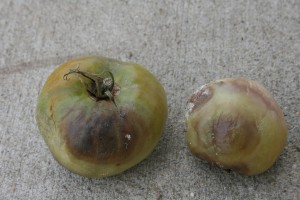
Cucurbit downy mildew
Pseudoperonospora cubensis
Cucurbit downy mildew is a foliar disease on cucurbits (squash, pumpkins, cucumbers, etc.) that moves in from other regions every year, as it does not overwinter in New York. A common symptom of the disease is the angular lesions limited by leaf margins. If infection is severe it will result in leaf defoliation and reduction is photosynthesis. Left untreated, the whole plant can die. The causal agent of cucurbit downy mildew is the oomycete, Pseudoperonospora cubensis, an obligate biotroph requiring live plant tissue for survival. Cucurbit downy mildew is a concern each growing season for New York growers. The Smart lab conducts field research trials comparing commercially available products and their efficacy in managing the disease. The lab is also interested in the diversity of the pathogen in New York State and in other regions of the country. In the past, the lab has investigated using rotorod spore traps to aerially detect the pathogen to better advise growers in the region. Previous work in the lab has identified genetic variation between P. cubensis and P. humuli, causal agent of hop downy mildew.
